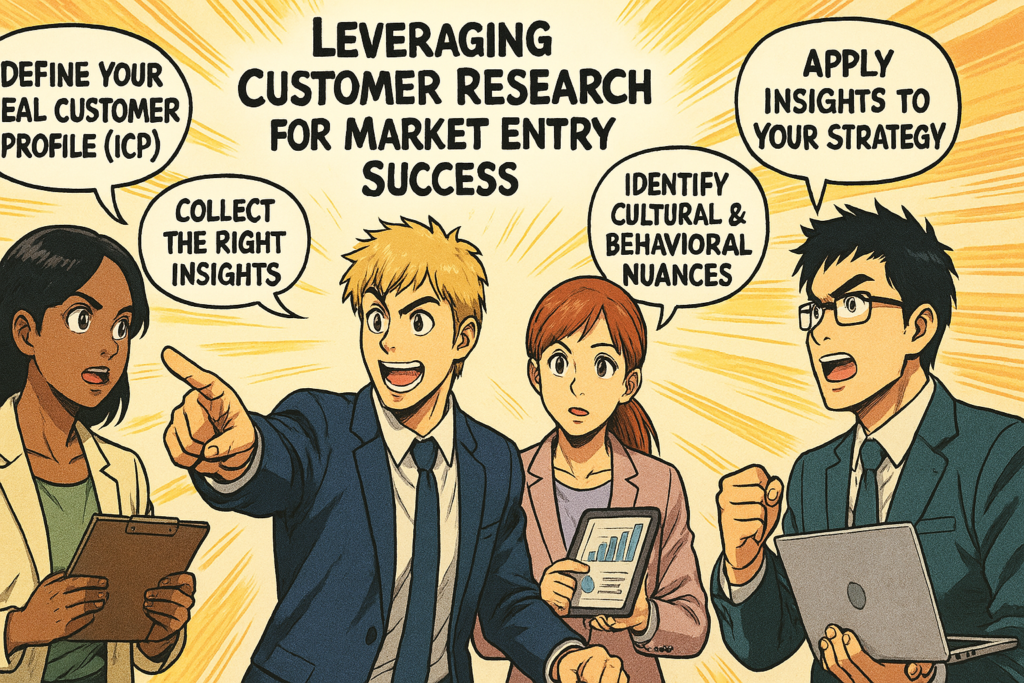The Future Isn’t About More Automation, It’s About Smarter Automation.
In 2025, your business isn’t just competing on product or service; it’s competing on agility, performance, and the sheer intelligence of its operations. Generic automation? That’s a relic of the past. It’s a crutch, not a catalyst. If you’re still relying on off-the-shelf solutions, you’re not just missing an opportunity – you’re actively creating bottlenecks.
The real game-changer for unparalleled efficiency and innovation? Custom Workflows. This isn’t about automating tasks; it’s about engineering your processes to perfectly align with your strategic objectives, amplifying your unique operational nuances. This is where simple efficiency transforms into a definitive competitive advantage.
Why “One-Size-Fits-All” Automation is a Recipe for Failure in 2025
The era of generic solutions is over. Today’s businesses grapple with escalating complexity, dynamic markets, and relentless pressure to innovate. Pre-designed automation tools, while fine for trivial tasks, are struggling to keep pace with the specific demands of a sophisticated business ecosystem.
The Hidden Costs of Off-the-Shelf Software
Standardized automation software, often built on rigid models, serves the lowest common denominator. They excel at basic functions—think email management or calendar reminders. But when your value chains get complex, when you need seamless integrations across disparate systems, or when your business logic is unique, these solutions reveal their profound weaknesses. They don’t just limit you; they force you to contort your operations to fit their mold, creating new inefficiencies where they promised to eliminate old ones. Customization is often superficial, a far cry from the depth required for truly Custom Workflows.
The Non-Negotiable Demands of the Modern Enterprise
Forward-thinking enterprises demand systems that don’t just execute tasks; they drive data analysis, inform strategic decision-making, and fuel continuous improvement. You need the flexibility to pivot rapidly in response to market shifts, new regulations, or emerging technologies. This level of adaptability is impossible with rigid solutions. Custom Workflows aren’t a luxury; they’re an absolute necessity for operational excellence and sustained innovation. They enable you to embed complex business logic, bespoke validations, and personalized interactions that generic solutions simply can’t handle.
Build Your Foundation: The Strategic Pillars of Custom Workflows
You wouldn’t build a skyscraper without a blueprint. The same applies to powerful Custom Workflows. This isn’t a random technical exercise; it’s a strategic undertaking demanding deep organizational insight and crystal-clear objectives.
Decode Your Current Ecosystem
Before you automate anything, you must relentlessly map your existing business processes. Identify every task, every owner, every system, every critical data point, and every interdependency. This detailed analysis will expose inefficiencies, redundancies, bottlenecks, and friction points that are suffocating your productivity. This discovery phase is paramount. It reveals precisely where automation will deliver the greatest value, ensuring your Custom Workflows target real problems, not assumptions.
- What are your most time-consuming or error-prone processes?
- Where do you experience the most frequent delays in your operations?
- Which tasks are repetitive and low-value for your team?
- Which systems are failing to communicate effectively?
Define Your Winning Strategy: Clear, Measurable Objectives
Once you possess a brutal clarity about your current state, you must define exactly what you aim to achieve with automation. Your objectives must be SMART: Specific, Measurable, Achievable, Relevant, and Time-bound. Forget “we want to be more efficient.” Aim for “Reduce order processing time by 30% within six months” or “Decrease data entry errors by 50% over the next year.” These objectives are your compass for designing Custom Workflows and evaluating your success. They ensure every workflow serves a precise purpose, maximizing your return on automation investment.
Engineer Your Future: Designing and Deploying Custom Workflows
With foundations laid and objectives locked, it’s time to move from theory to execution. This is where strategic vision meets technical expertise to transform your operations.
The Blueprint: Workflow Modeling
Modeling is the art of translating your audited business processes and objectives into a clear, logical workflow diagram. Break down each process into discrete steps, identify triggers (when should the workflow start?), conditions (when should a specific action be taken?), and actions (what should the system do?). Leverage powerful modeling tools like BPMN (Business Process Model and Notation) to visualize these flows, ensuring all stakeholders grasp the expected functionality. This is a collaborative phase where business leaders work alongside solution architects, ensuring Custom Workflows precisely reflect your unique business needs.
Choose Your Weapons Wisely: Technologies and Platforms
The automation tech landscape is vast and ever-evolving. Your tool selection hinges on the complexity of your Custom Workflows, your existing infrastructure, and your budget. Consider these key categories:
- Robotic Process Automation (RPA): Perfect for automating repetitive, rule-based tasks performed on existing user interfaces, often without deep system integrations. (Learn more about RPA)
- Low-Code/No-Code Platforms (LCNC): Empower business users to build applications and Custom Workflows with minimal or no coding, accelerating development.
- Integration Platform as a Service (iPaaS): Connects disparate applications and data sources to automate information flow between them, creating a unified ecosystem.
- Artificial Intelligence (AI) & Machine Learning (ML): Unleash power for complex tasks requiring pattern recognition, predictive analysis, or intelligent decision-making.
The critical factor? Choose technologies that can integrate seamlessly to build holistic, effective Custom Workflows. Don’t create new data silos.
Seamless Integration: The Unsung Hero of Success
Successful Custom Workflows live or die by their ability to integrate seamlessly with your existing systems. Your ERP, CRM, accounting software, e-commerce platforms, internal databases—every single touchpoint must be considered. Poorly planned integration will negate all the benefits of automation. Plan your APIs (Application Programming Interfaces), connectors, and gateways meticulously so data and actions flow freely across all components of your Custom Workflows. Prioritize scalability and robustness from day one.
Relentless Optimization: Sustaining Your Automated Advantage
Automation isn’t a “set it and forget it” project. It’s a continuous pursuit of perfection. The most powerful Custom Workflows are those that evolve dynamically with your business and its environment.
Iteration is Not Optional; It’s Imperative
Business processes are never static. They adapt to growth, market shifts, and new regulations. An iterative approach—where workflows are regularly reviewed, rigorously tested, and incrementally refined—is non-negotiable. This allows you to adjust logic, integrate new features, or correct inefficiencies before they become catastrophic problems. Relentless iteration ensures your Custom Workflows remain relevant, high-performing, and aligned with your evolving strategic goals.
Monitor, Analyze, Adapt: The Feedback Loop of Excellence
To truly optimize your Custom Workflows, you must implement robust monitoring mechanisms. Real-time dashboards and comprehensive reports provide invaluable insights into workflow performance: success rates, execution times, and error logs. Analyzing this data empowers you to identify bottlenecks, weaknesses, or new opportunities for improvement. Based on these insights, you can make precise adjustments to your workflows. This continuous feedback loop is the ultimate key to maintaining optimal performance and ensuring your Custom Workflows consistently deliver maximum value.
The Tangible Rewards: Unlocking Concrete Business Value with Custom Workflows
Investing in Custom Workflows isn’t just about buzzwords; it’s about securing tangible, strategic advantages that will redefine your business’s competitiveness and resilience in 2025 and beyond.
Skyrocket Productivity, Slash Costs
One of the most immediate impacts of Custom Workflows is a dramatic surge in productivity. By eliminating repetitive, soul-crushing tasks, your team is liberated to focus on strategic, creative, and complex activities that demand human judgment. This means better utilization of human capital and significantly reduced lead times. Fewer human errors translate directly into less rework, which means substantial cost savings. Stop paying for inefficiency.
Elevate Customer and Employee Experience
Fluid, intelligently designed processes powered by Custom Workflows directly enhance the customer experience. Faster responses, more personalized interactions, and seamless service delivery dramatically boost customer satisfaction and loyalty.
But it’s not just about customers. Your employee experience is fundamentally transformed. By offloading tedious, mundane tasks, automation reduces burnout and empowers your team to engage in more enriching aspects of their work. This fosters higher job satisfaction and cultivates a truly innovative company culture. When your people thrive, your business thrives.
Unleash Agility and Operational Resilience
In today’s unpredictable business landscape, agility and resilience are paramount. Custom Workflows provide this essential flexibility, enabling your enterprise to pivot rapidly to change. Whether it’s new regulations, market disruptions, or unforeseen challenges, automated processes can be adjusted with lightning speed, granting you a decisive competitive edge. You’re not just reacting; you’re anticipating.
The Path Forward: Navigating Challenges and Mastering Custom Workflow Implementation
Despite their undeniable benefits, implementing Custom Workflows isn’t without its hurdles. Anticipating and addressing these obstacles head-on is critical to guaranteeing the success of your automation initiative.
Manage Change, Master Adoption
The human element is often the biggest challenge. Employees might perceive automation as a threat to their roles. Transparent, clear communication is non-negotiable. Explain the benefits of automation—how it frees them for higher-value work, how it makes their jobs more fulfilling. Involve teams from the earliest design phases of Custom Workflows and provide comprehensive training. This isn’t just about teaching them new tools; it’s about empowering them to embrace a new way of working.
Security and Compliance: Non-Negotiables
As Custom Workflows integrate more systems and process increasing volumes of sensitive data, security and compliance become paramount. You must design your workflows with regulatory adherence and robust security protocols embedded from the start. Data breaches and non-compliance are not options; they are business killers. Build it secure, build it compliant.
The AI Imperative: Workflows of Tomorrow
The integration of Artificial Intelligence (AI) is the next frontier for Custom Workflows. AI enables you to handle more complex, nuanced situations. Imagine intelligent chatbots resolving customer queries, or advanced systems analyzing vast datasets to continuously optimize processes. AI doesn’t just automate; it learns, adapts, and makes your workflows smarter, faster, and more predictive. (Understand the impact of AI in business)
Your Call to Action: Shape Your Automated Future
Adopting Custom Workflows isn’t merely a technological trend; it’s a strategic evolution for any enterprise determined to dominate the business landscape of 2025. By investing in the meticulous personalization of your processes, you are forging a bedrock of agility, resilience, and unyielding innovation. Stop procrastinating. Start sculpting your automated future today. The competition isn’t waiting, and neither should you.



